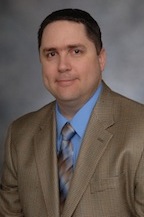Feb 7 2014
Rice University synthetic biologist Ramon Gonzalez sees a future – a near future, in fact – in which Americans get enough clean transportation fuel from natural gas to help make the nation energy independent.
 Ramon Gonzalez
Ramon Gonzalez
As a program director with the Department of Energy’s Advanced Research Projects Agency-Energy (ARPA-E), he’s in a position to help make it happen.
In an article in this week’s Science magazine, Gonzalez, an associate professor of chemical and biomolecular engineering, discusses his vision for the development of revolutionary bioconversion technologies for the production of liquid transportation fuels from natural gas. This vision is the basis for a program, Reducing Emissions Using Methanotrophic Organisms for Transportation Energy (REMOTE), developed by Gonzalez and his team at ARPA-E. The program currently supports 15 teams with a budget of approximately $35 million.
He and co-author Robert Conrado, a former senior fellow at ARPA-E, detailed the barriers that must be overcome for the United States to turn the methane-rich natural gas it produces in great abundance into fuel that remains liquid at room temperature – basically, a clean-burning, low-cost gasoline equivalent.
Gonzalez is in the first year of the agency’s three-year commitment to create natural gas bioconversion technologies through REMOTE. “Our goal is to come up with things that are not on anyone’s radar, completely new approaches that are transformational in nature,” he said. “Natural gas is one of the most-abundant resources in the world, but until now the U.S. had invested very little in natural gas bioconversion research.”
The United States produces more natural gas than any other country, but converting it to liquid fuel without throwing away most of the energy it contains is expensive, Gonzalez said. “The gas-to-liquids (GTL) technologies that exist today can only support technologically complex, multistep processes that need to operate at large scale, which means multimillion-dollar investments in each facility. It’s probably economically viable today because natural gas is so cheap, but it’s bad in terms of energy efficiency and emissions.”
While bioconversion offers a potential solution to the large-scale, capital-intensive nature of the GTL approach, implementation of today’s bioconversion technologies would lead to “wasting half of the energy and one-third of the carbon in methane during conversion to a liquid fuel and hence a huge carbon footprint,” he said. “And when natural gas goes up in price, it won’t be economically viable anymore.”
REMOTE’s goal is to solve both problems by getting the most energy out of natural gas with the least energy input. The key, Gonzalez said, is to engineer enzymes that efficiently “activate” carbon-hydrogen bonds in methane, the first step toward conversion. That involves the manipulation of microbial cells that alter materials at the molecular level.
“People have been trying really hard to do it for decades,” he said. “I think it’s going to happen within the life of the program – that is, within the first three years.”
Next, he said, researchers will need an efficient way to convert activated, intermediate methane into liquid fuel in concert with the development of high-productivity bioreactors.
Gonzalez remains in charge of his Metabolic Engineering and Synthetic and Systems Biology Lab at Rice, but he has spent most of his working hours on REMOTE since joining ARPA-E 18 months ago. As program director, he and his team formulated a vision for REMOTE and created a road map to develop GTL technologies with high energy efficiency and a low carbon footprint. A successful program, he said, will support natural gas bioconversion facilities with low capital cost and at small scales, which in turn would enable the use of any natural gas resource, including those frequently flared, vented or emitted.
He said he hopes to fulfill the agency’s mission by promoting revolutionary advances in both fundamental and applied sciences. “The development cycle for a truly new, transformative technology in the energy domain takes anywhere from five to 15 years to develop,” Gonzalez said. “I would say the five-year time frame is optimistic, but I think by the end of this decade, technologies like the ones we’re promoting with REMOTE should be in place.”
One essential element is already in place: the infrastructure for delivering and using liquid fuel. Ideally, consumers would see no difference in the way they fill and run their cars. “I would be really happy if we could see something commercialized by the end of this decade,” Gonzalez said.